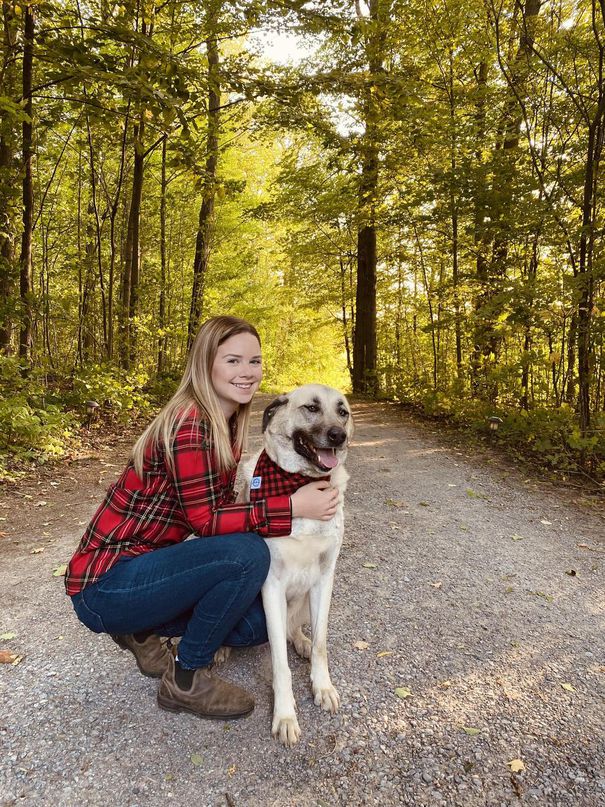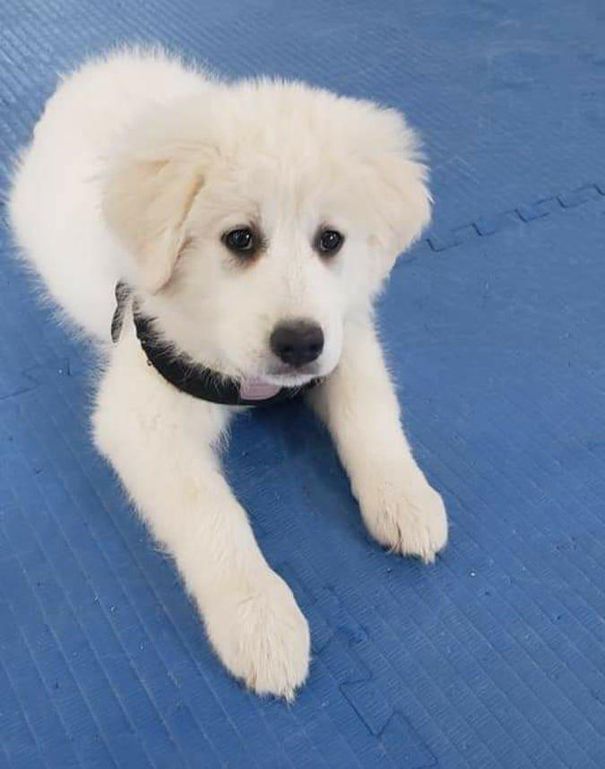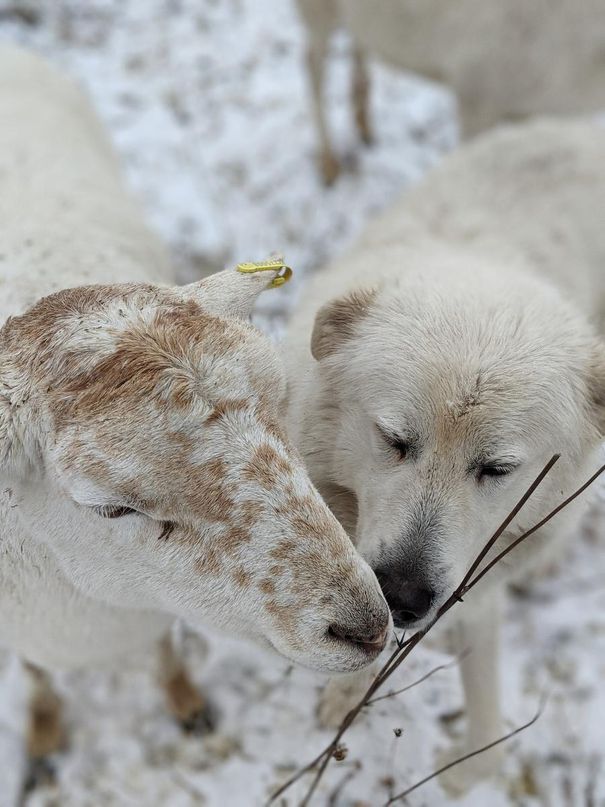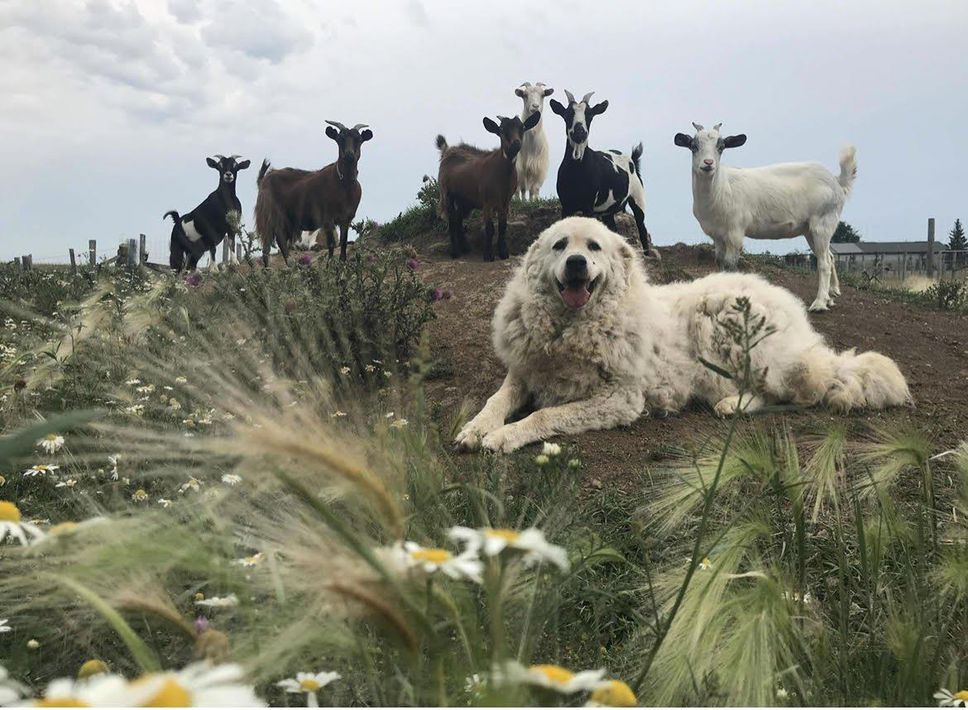Visit almost any farm and may be cautiously investigated, or rarely greeted with a wag, by a large, often fluffy, deep-voiced dog, possibly a Great Pyrenees, Maremma, Mastiff, Kuvasz, Anatolian Shepherd, or Komondor. or any other. one of the breeds of livestock guardian dogs (LGD) available in North America. LGDs are not hunting or herding dogs, and they should definitely not be confused with a typical pet dog.
Dog trainer Brittany Hudson knows these powerful and sometimes misunderstood breeds. “Livestock guard dogs are very serious dogs with strong protective instincts,” said Hudson. “They have the independence to make decisions for themselves, and they have this ‘I don’t need you’ attitude, so if someone wants an obedient pet, they will be shocked; watchdogs are affectionate with his persons. They are not dog park or family gathering dogs. “
Amanda Peterson agrees and disagrees. The Port Hope resident rescued a Turkish Kangal. He found Luna online, “free to a good home,” and adopted her. “Kangals can be dangerous,” Peterson said. At 740 PSI (pounds of pressure per square inch), their bite is more powerful than that of a pit bull or rottweiler, and these massive dogs, which can reach 200 pounds, are designed to protect livestock from wolves and cougars.
“Luna weighs 125 pounds,” Peterson said. “When he stands up, he’s face to face with me and I’m 5’7”! “With her people, she’s kind and protective. ‘She never showed her teeth at us,” Peterson said. she was on a leash to get where she wanted to go, and she’s not good with other dogs. ” But Peterson has spent time training Luna and helping her become a good family dog.
“LGDs are bred to be working dogs,” Hudson said. “People seem to forget that these dogs love the outdoors. Dogs like the Great Pyrenees hate heat and want to be outdoors even in the harshest weather, which can cause a problem in cities with laws about not leaving dogs outside all the time. They are bred to bark, a lot! They will bark all night and there is no way to stop their genetic barking. They are naturally nocturnal dogs and do not play well with others. Another dog entering your yard is a direct threat and they can attack and kill ‘invaders’, just as they would a coyote or wolf. Invaders can also include the neighbor or the postman, and since they make decisions for themselves, don’t expect them to look at you before deciding whether someone is a threat or not. “
“I’ve heard story after story of people getting dogs like the Anatolian Shepherd, Maremma, Great Pyrenees, etc., and they either have regrets or have to change their lifestyle to accommodate the dog,” Hudson said. “Still, they are incredible dogs for what they are meant to be: being on a farm, in containment with their livestock, protecting themselves from predators without human supervision, spotting threats, and making decisions about how to best take care of that threat. They are pretty, but I see people falling apart all the time from poor race choices. There are enough family breeds without people buying working dogs as pets. “
Still, Hudson doesn’t want people to think of them as “monsters.” “But,” said Hudson, “they are very serious, powerful, and very noble dogs and cannot be trained in the same way that you train a laboratory that wants to please you.”
Josh Noiseux of Evermeadow Farm in Cold Springs relies on Ingrid, a Maremma, to keep his little flock of Katahdin sheep safe. “We have Ingrid in March 2020,” Noiseux said. “About the same time we got our sheep. Many sources strongly advised us not to get sheep until we had a livestock guardian dog. That said, he was basically learning his job for the first 12-16 months and wasn’t fully functional as a guard until early this summer. “
Watchdogs have quirks. “They have been bred to tolerate and thrive in a lifestyle of feast and famine, similar to wild dogs,” Noiseux said. “In the old days, the shepherds fed them bread and water and any dead animals or placenta. This was a useful service to keep the pastures clean and avoid attracting predators. And eat a lot. “Fortunately,” Noiseux said. “We have offal to provide for you, for your health and for our pocketbook. We feed her fairly regularly, which helps her keep a nice layer of fat for cold weather. Some livestock guard dogs will hunt some small critters. Ingrid hunts mice vigorously in all the paddocks. “
Ingrid has been in the house, but she just wants to be outside with her flock. “Even if it’s -15 ° C and it’s stormy, you want to be outside,” Noiseux said. “She just snuggles up and tucks her nose under her tail. As far as she is concerned, the sheep are her relatives. Although he is not sentimental about it; I had to slaughter a sheep in front of her and she was unfazed at all. “
“I can trust her,” Noiseux said. “I can hear the coyotes at night and have seen their tracks in the snow in the morning; They cross the open fields and come to the sheep fence, then turn right and drive away. They don’t even try. Ingrid’s presence is a deterrent. “
For Noiseux, it is a more harmonious “predator friendly” way of growing. “I like coyotes. The fact that they are close means that there is a healthy ecosystem, that they have enough to eat. Having a watchdog means not having to control them in any other way. “
“Ingrid is alert and on guard all the time,” Noiseux said. “When I first got the sheep, I spent sleepless nights worrying about them. I would get up to see how they were and there she was, alert and on guard, so now I’m more relaxed. “
The races that make up this elite force are universally strong, large, hairy, made for the weather, and born with an instinctual drive to protect whatever it is that you consider to be your family. It is in their ancestral genetics. And it’s these special genes that Noiseux is concerned about. “People are raising some of these dogs for the pet market,” Noiseux said. “And that will dilute your natural instincts; dilute this valuable and special genetics. “
Risa Marascio at Peepabun Farm in Grand Valley has Cass, a 10-year-old Hungarian Kuvasz, and Kara, a two-year-old Sarplaninac. “The two girls,” Marascio said. “Take care of my herd of failing goats and our alpacas. The Sarplaninac are more tenacious than the Kuvasz, so they are definitely not for the faint of heart. Kara and Cass have a beautiful working relationship; Cass is nearing the end of her working life, she is 10 and a half years old, so Kara has become the legs and the muscle of the operation. “
“One night last summer,” recalls Marascio. “I had already done the night check and was inside watching TV before going to bed when Kara and Cass started barking frantically. Usually when that happens they just got a raccoon cornered or something, so I grabbed my flashlight and headed out. As soon as I got out I could hear the coyotes howling and they were very close. I started to walk towards the barn and as I did so I heard one of my goats screaming in panic. I don’t think I’ve ever moved so fast, I jumped over the gate and one of my goats, Princess, had poked her head through the fence to carry the grass to the other side, but couldn’t back down because of her horns. I caught up with her and luckily she was fine, but I could hear the coyotes fighting and running in the wheat field where she was trapped. There I was in the darkness of the mouth behind the barn trying to free this goat as the dogs were going crazy and I could feel the coyotes approaching. I managed to free her, but that was a scary few minutes. If it hadn’t been for Kara and Cass that night, Princess would have literally lost her mind. “
Correction – December 21, 2021: This article was edited to correct that one sheep was slaughtered, not six.
JOIN THE CONVERSATION
Reference-www.thestar.com



